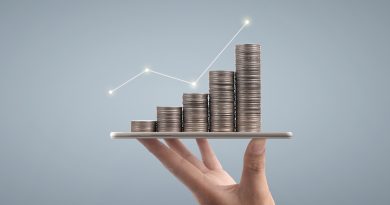HMRC Records Highest Ever VAT Revenues In 2022
VAT revenues reach the highest amount ever as HMRC collects £157 billion in only one year. Businesses had to make up for VAT payments they had put off during the epidemic. As a result, HMRC has collected a record £157.2 billion from VAT bills in this recent tax year. And it has gotten a 55 per cent increase over the £101 billion earned in 2020/21.
So, before we learn more about it, are you familiar with basic terms? If not, let us give you a basic idea about what HMRC and VAT are.
What is HMRC?
HMRC stands for Her Majesty’s Revenue and Customs. It is the tax authority of the British government. Besides, we know it as Her Majesty’s Revenue Services. The organization is in charge of tax collection, paying child benefits, and enforcing tax and customs rules. Moreover, it makes sure that companies pay the minimum wage.
Inland Revenue and the Board of Customs and Excise merged in 2005 to establish HMRC. These are the organizations that formerly handled domestic taxes and customs collection, respectively.
What are the functions of HMRC?
HMRC is responsible for collecting all direct and indirect taxes in the United Kingdom. This includes income tax, company tax, capital gains tax, inheritance tax, and value-added tax (VAT). The list goes on with excise fees, stamp duty, land tax, air passenger duty, and the climate change levy.
Moreover, the HMRC makes sure that the tax system is applied and followed in the best way possible. It is in charge of ensuring effective tax collection and money transfer to the Treasury. Additionally, it ensures that money is available to pay for public services. The HMRC’s tax-related division’s other responsibility is to inform and educate the general public about the necessity of paying taxes.
It also monitors the Government Banking Services. The HM Treasury receives information from it to ensure an accurate cash management system.
So, now you know about HMRC, but what is VAT?
What is VAT tax?
Value-Added Tax (VAT) is a tax that you pay on purchases of goods or services in EU member states. In every situation, the end consumer of the commodity or service is the one who must pay the tax. On the other hand, manufacturers, wholesalers, and retailers all serve as VAT collectors in the supply chain.
They add the VAT they have collected from their client to their VAT return to Revenue. However, they can claim the appropriate amount of VAT charged to them by their suppliers when repaying the VAT.
The State’s territorial sea is also included for VAT purposes. Its territorial sea reaches a maximum distance of twelve nautical miles.
Who is liable for taxes?
Any individual who independently operates a business in the European Union is a taxable person. Also, it includes those who are VAT-exempt as well as flat-rate (unregistered) farmers in this category.
HMRC pockets the highest ever VAT revenues this year. How?
We all know how the pandemic gave a huge blow to the economy. Therefore, the Government chose to give some recession to the taxpayers.
Bars, restaurants, and hotels were forced to close due to the lockdown. So, to lessen the burden, the rate was temporarily lowered to 5 per cent for them during the pandemic. As a result, when the Government put the rates back to the previous rates this year, it caused a hike in the revenue.
Accountants claim that since the hospitality industry’s VAT rate jumped to 20 per cent on March 31, HMRC’s VAT income has surged significantly.
The government also instituted a VAT vacation between March and June 2020. It was to aid companies that were severely affected in the early phases of the pandemic.
Later, the government expanded the break. It enabled many businesses to divide their VAT payments into more manageable payments until March 2022.
According to Sean Glancy, a partner at the accounting firm UHY Hacker, inflation can also be a vital cause. The substantial increase in inflation has also contributed to an increase in the amount of VAT that HMRC collects.
He says that implementing the VAT vacation indeed helped the businesses. However, they ended up paying the highest amount of VAT ever the following year.
Thus, these are reasons why HMRC has been able to bag the highest amount of VAT in 2022.




